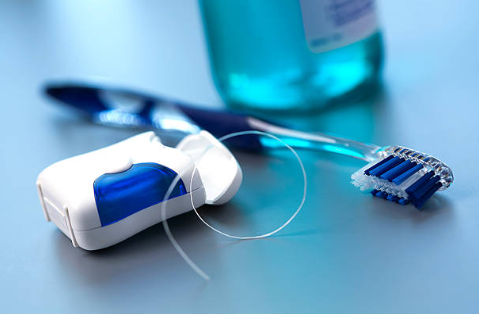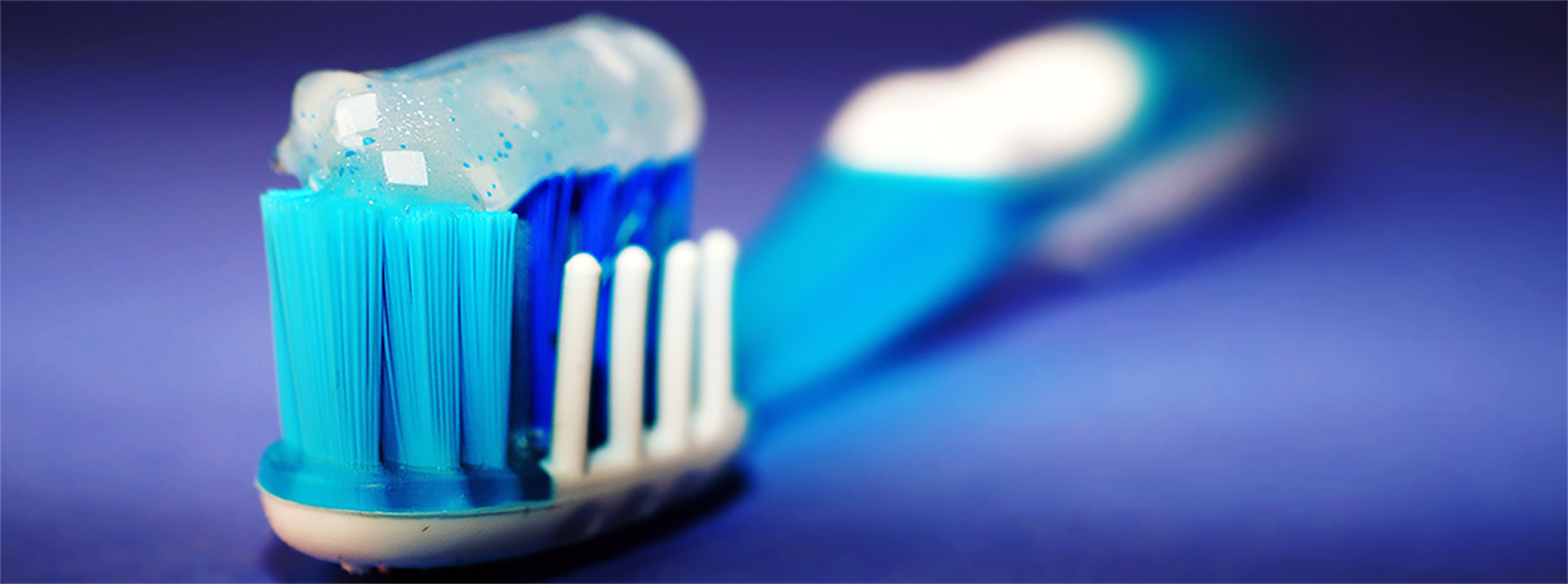

Preventive dental care is important throughout life. By practicing good oral hygiene at home and scheduling regular checkups with Building Smiles Dental Clinic will keep your smile bright and healthy for many years.
Tooth decay and periodontal disease are caused by bacterial plaque. This colorless film sticks to your teeth from the gum-line and builds up to cover your teeth. Twice daily brushing and flossing of your teeth can help you remove these germs and help prevent tooth decay and periodontal disease.
Brush your teeth at least twice a day with a soft-bristled toothbrush. Use fluoride toothpaste to remove food particles and plaque from the tooth surfaces. Be sure to brush the top surface of your tongue as this will remove any extra plaque-causing food particles and help keep your breath fresh.
Decay-causing bacteria can linger between teeth where toothbrush bristles cannot normally reach. Dental floss and mouthwashes help to remove plaque, and food particles from between the teeth and under the gum line. Clean between your teeth by flossing at least once a day, and/or use a mouthwash to help kill bacteria and freshen your breath.
Building Smiles Dental Clinic provides a protective plastic coating to the chewing surfaces of the back teeth where decay often starts. Children and people who are at a high risk for dental decay benefit greatly from this coating. Active sportsmen should ask us about special mouthguards designed to protect your smile.
Schedule regular dental checkups and professional teeth cleaning with the clinic every six months. Eat a balanced diet and try to avoid extra-sugary treats. Nutritious foods such as raw vegetables, plain yogurt, cheese, and fruits can help keep your smile healthy.

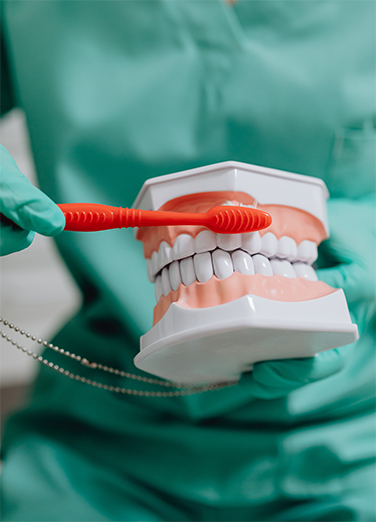
Building Smiles Dental Clinic recommends the use of a soft to medium toothbrush.
Position the brush at a 45-degree angle where your gums and teeth meet. Gently move the brush in a circular motion several times using small, gentle strokes brushing the outside surfaces of your teeth. Use light pressure while putting the bristles between the teeth, but not so much pressure that you feel any discomfort. When you are done cleaning the outside surfaces of all your teeth, follow the same directions while cleaning the inside of the back teeth.
To clean the inside surfaces of the upper and lower front teeth hold the brush vertically. Make several gentle back-and-forth strokes over each tooth. Do not forget to gently brush the surrounding gum tissue.
Proceed to clean the biting surfaces of your teeth by using short, gentle strokes. Change the position of the brush as often as necessary to reach and clean all surfaces. Try to watch yourself in the mirror to make sure you clean each surface. After you are done, rinse vigorously to remove any plaque you might have loosened while brushing.
Sometimes after dental treatment, teeth are sensitive to hot and cold food and drinks. If the mouth is clean, this should soon go away. If sensitivity persists, consult the dentist. Specially medicated toothpaste or mouthrinse for sensitive teeth may help.
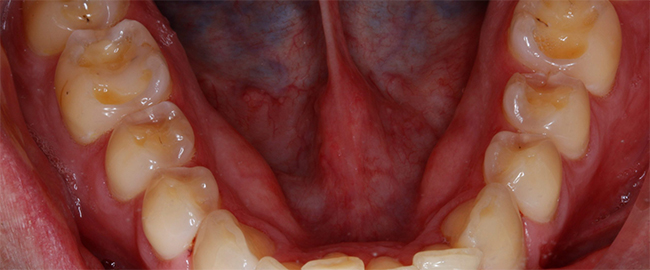
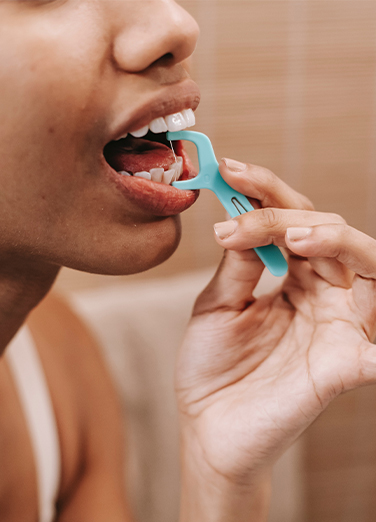
Flossing is a very effective way to remove plaque from those surfaces in-between teeth that are difficult for brushes to reach. It is simple, but necessary; and it requires an effective technique. With practice, the technique is easy to master. Start with a piece of floss (waxed is easier) about 18” long. Lightly wrap most of the floss around the middle finger of one hand. Wrap the rest of the floss around the middle finger of the other hand.
To clean the upper teeth, hold the floss tightly between the thumb and forefinger of each hand.
Gently insert the floss tightly between the teeth using a back-and-forth (or see-saw) motion. Do not force the floss, or try to snap it in to place. If the strands splay out, make sure to get a new piece of floss.
Bring the floss to the gum-line, then curve it into a C-shape against one tooth.
Slide it into the space between the gum, and the tooth until you feel some slight resistance.
Move the floss up and down on the side of one tooth.
Remember that there are two tooth surfaces to in each space. Continue to floss each side of all the upper teeth. Be careful not to cut the gum tissue between the teeth.
As the floss becomes soiled, turn from one finger to the other to get a fresh section.
We use a reverse of the above technique to clean between the bottom teeth. Guide the floss using the forefingers of both hands. Do not forget the backside of the last tooth on both sides of the jaws, upper and lower.
When you are done, rinse vigorously with water to remove plaque and food particles. Do not be alarmed if during the first week of flossing your gums bleed, or are a little sore. If your gums hurt while flossing you could be doing it too hard or pinching the gum. As you floss daily, and remove the plaque your gums will heal, and the bleeding should stop.
There are so many products in the market. This makes choosing between all the products somewhat difficult. Building Smiles Dental Clinic offers some suggestions for choosing dental care products that will work for most patients.
Automatic and electronic toothbrushes are safe and effective for the majority of the patients. Oral irrigators (water spraying devices) will rinse your mouth thoroughly, but will not remove plaque. You need to brush and floss in conjunction with the irrigator.
Some toothbrushes have a rubber tip on the handle to massage the gums after brushing. There are also tiny brushes (inter-proximal toothbrushes) specially designed to clean between your teeth. Improper use injures the gums, so discuss proper use with the dentist.
Fluoride toothpastes and mouth rinses, used in conjunction with brushing and flossing, reduce tooth decay by as much as 40 per cent. Fluoride rinses should not be used for children under six years of age. Tartar control toothpastes reduce tartar above the gum line, but gum disease starts below the gum-line; and these products have not been proven to reduce the early stage of gum disease.
Approved anti-plaque rinses contain agents that may help bring early gum disease under control. Use these in conjunction with brushing and flossing.
